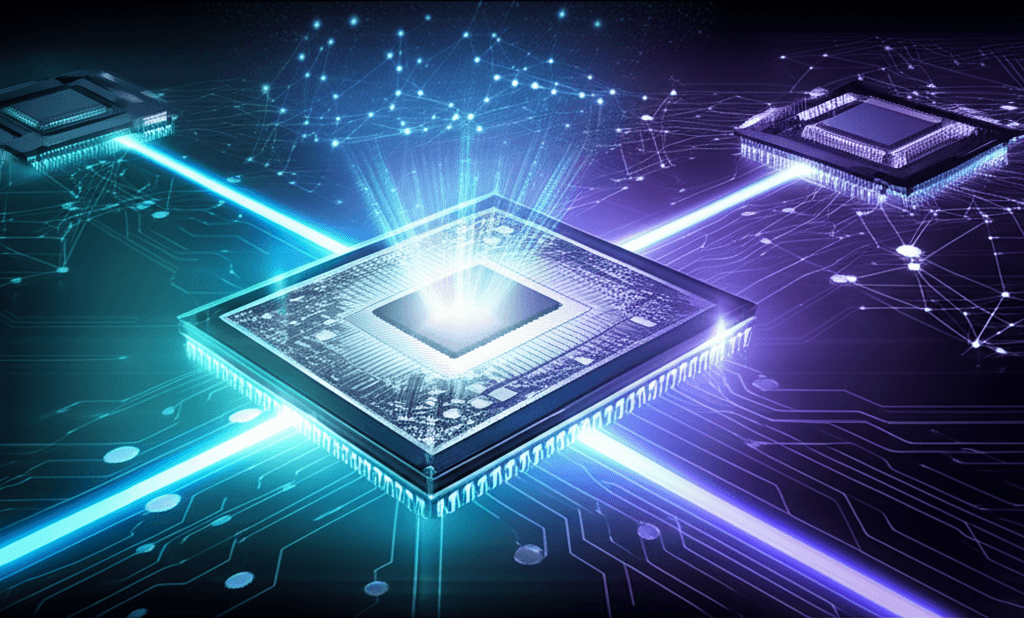OpenAI challenges Nvidia dominance, tests Google's custom AI chips.
OpenAI's exploration of Google's TPUs signals a broader industry pivot toward diverse, cost-efficient AI hardware beyond Nvidia.
July 1, 2025

In a significant move that underscores the shifting dynamics of the artificial intelligence hardware landscape, OpenAI has been testing Google's Tensor Processing Units (TPUs). This exploration into alternatives to Nvidia's dominant graphics processing units (GPUs) signals a broader industry trend toward supply chain diversification and cost management. While the AI pioneer has confirmed it is in the early stages of testing Google's custom-designed chips, it has also clarified that there are no immediate plans for large-scale deployment.[1][2] The development, however, reveals the intense and evolving hardware strategies at play among the world's leading AI companies.
OpenAI's experimentation with TPUs is a notable event, primarily because the company has historically relied almost exclusively on Nvidia's GPUs, accessed through its deep partnership with Microsoft Azure.[3][4] This reliance has made OpenAI one of Nvidia's largest and most important customers, fueling the chipmaker's meteoric rise.[5] The decision to explore Google's hardware is multifaceted. Surging demand for OpenAI's services, like ChatGPT, has created an insatiable need for more computing power, a demand that has at times been difficult to meet even with the backing of Microsoft's extensive infrastructure.[6][7] By turning to a direct competitor's hardware, OpenAI is signaling a pragmatic approach to securing the necessary computational resources to power its expanding operations and future model development. Cost is another critical factor; running AI models, particularly the inference stage where models generate responses, is a continuous and substantial expense.[4] Google's TPUs, which are designed specifically for AI workloads, are positioned as a potentially more cost-effective solution for these tasks.[8][9]
This move is a considerable endorsement of Google's long-term investment in custom silicon.[10][11] For years, Google developed its TPUs primarily for internal use, powering its own massive AI services like Search and Gemini.[12][4] Recently, Google has made its TPUs available to external customers through Google Cloud, attracting other major AI players like Anthropic and Apple.[8][4] Securing OpenAI as a customer, even for testing, is a significant win for Google Cloud and a validation of its TPU architecture.[6][13] It strengthens Google's position as a serious competitor in the AI infrastructure market, which has been overwhelmingly dominated by Nvidia.[13] However, reports suggest that Google is not providing OpenAI with its most advanced TPUs, reserving its cutting-edge chips for its own internal AI development, a move that highlights the complex competitive relationship between the two AI giants.[10][11]
The implications of OpenAI's hardware diversification extend far beyond its relationship with Google. It is a clear signal of a strategic imperative to mitigate the risks associated with depending on a single supplier.[4] GPU shortages and price fluctuations have exposed the vulnerabilities of such a reliance.[4] In response, OpenAI is not only testing Google's TPUs but has also forged partnerships with other cloud providers like Oracle and the data center provider CoreWeave to secure additional capacity.[6][14] This multi-cloud strategy provides OpenAI with greater flexibility, negotiating leverage, and the ability to scale more effectively.[4][7] Furthermore, reports have surfaced about OpenAI's own ambitions to design custom AI chips, a move that reflects a broader industry trend toward vertical integration, with tech giants like Amazon, Meta, and Google all developing their own silicon to optimize performance and control costs.[7][2]
In conclusion, while OpenAI has downplayed any immediate, large-scale shift away from its primary partners, its testing of Google's TPUs is a strategic maneuver with far-reaching consequences. It underscores the immense and growing demand for AI computation, the critical importance of cost-effective and scalable infrastructure, and the strategic necessity of diversifying hardware supply chains. For Nvidia, it serves as a reminder that its market dominance, while currently secure, is not unchallengeable.[15][4] For Google, it is a powerful validation of its decade-long investment in custom AI accelerators. For the AI industry as a whole, it signals a maturation, a move toward a more competitive, flexible, and distributed hardware ecosystem where the future of artificial intelligence will be built not on a single platform, but on a diverse array of powerful and specialized processors.[15][16]
Sources
[1]
[5]
[6]
[9]
[10]
[11]
[12]
[13]
[14]
[15]
[16]